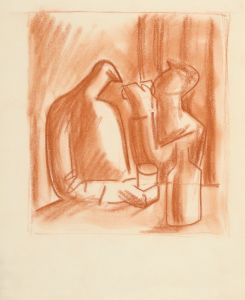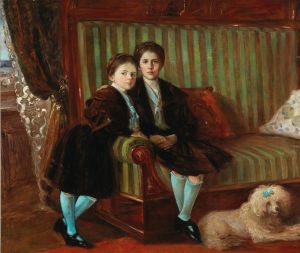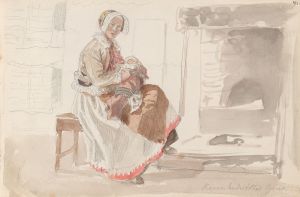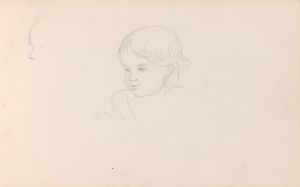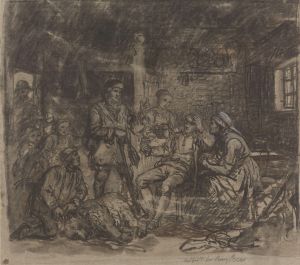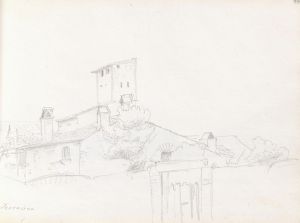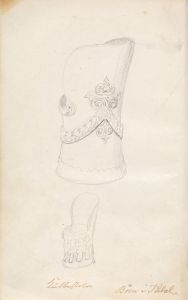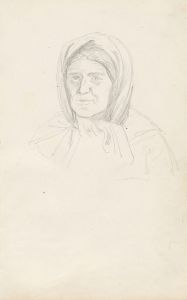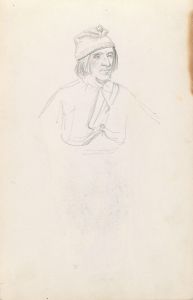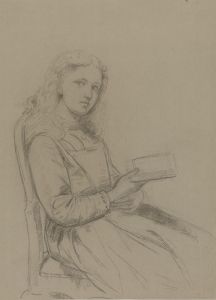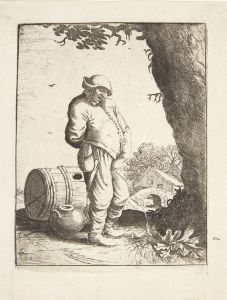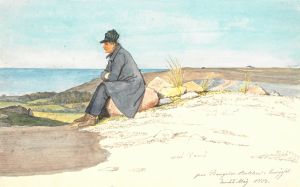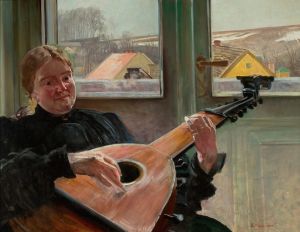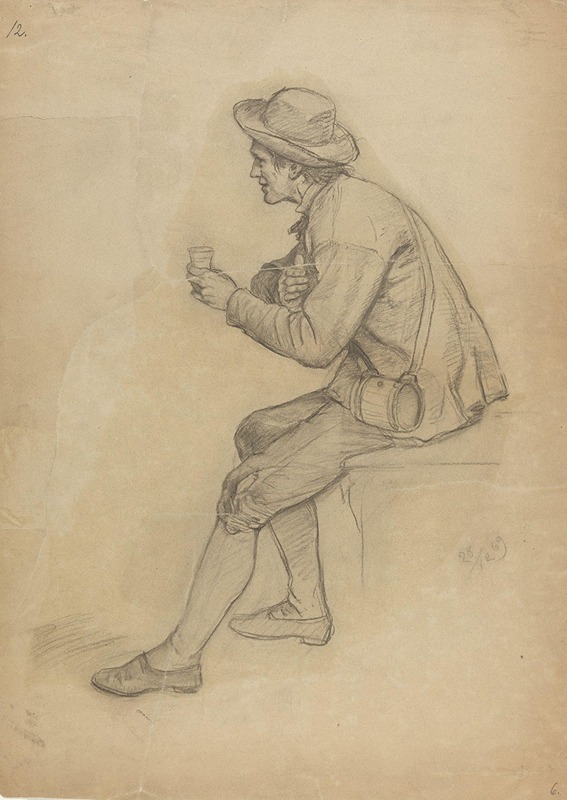
Sittende mann med beger
A hand-painted replica of Adolph Tidemand’s masterpiece Sittende mann med beger, meticulously crafted by professional artists to capture the true essence of the original. Each piece is created with museum-quality canvas and rare mineral pigments, carefully painted by experienced artists with delicate brushstrokes and rich, layered colors to perfectly recreate the texture of the original artwork. Unlike machine-printed reproductions, this hand-painted version brings the painting to life, infused with the artist’s emotions and skill in every stroke. Whether for personal collection or home decoration, it instantly elevates the artistic atmosphere of any space.
Adolph Tidemand was a prominent Norwegian painter in the 19th century, known for his detailed and culturally rich depictions of Norwegian life and traditions. One of his works, "Sittende mann med beger" (translated as "Seated Man with a Goblet"), exemplifies his focus on capturing the essence of Norwegian folk culture.
Adolph Tidemand was born on August 14, 1814, in Mandal, Norway. He studied at the Academy of Art in Copenhagen from 1832 to 1837 and later continued his studies in Düsseldorf, Germany, which was a significant center for art at the time. Tidemand became associated with the Düsseldorf school of painting, which emphasized detailed realism and often focused on historical and genre scenes.
"Sittende mann med beger" is a painting that reflects Tidemand's interest in Norwegian folk life, a theme that he explored extensively throughout his career. His works often depicted scenes from rural Norway, capturing the customs, costumes, and daily activities of Norwegian people. This particular painting features a man seated with a goblet, which may suggest a moment of rest or celebration. The attention to detail in the man's attire and the setting is characteristic of Tidemand's style, which sought to document and preserve Norwegian cultural heritage through art.
Tidemand's work gained significant recognition in Norway and abroad. He was part of a movement that sought to establish a distinct Norwegian cultural identity during a time when Norway was in a union with Sweden. His paintings were not only appreciated for their artistic merit but also for their contribution to the national romanticism movement, which aimed to promote Norwegian culture and history.
Throughout his career, Tidemand collaborated with other artists, most notably Hans Gude. Together, they created some of the most iconic images of Norwegian landscapes and people, such as "Bridal Procession on the Hardangerfjord." While "Sittende mann med beger" is a more intimate scene compared to some of his larger collaborative works, it still embodies the same dedication to portraying Norwegian life authentically.
Adolph Tidemand's influence extended beyond his lifetime, as his works continued to inspire future generations of Norwegian artists. His paintings are held in high regard and are part of several important collections, including the National Gallery in Oslo. Tidemand passed away on August 25, 1876, but his legacy as a key figure in Norwegian art history endures.
In summary, "Sittende mann med beger" by Adolph Tidemand is a testament to the artist's commitment to capturing the essence of Norwegian folk culture. Through his detailed and realistic portrayal of everyday life, Tidemand played a crucial role in the national romanticism movement, helping to shape and preserve Norway's cultural identity during the 19th century.





